In this season of cold, snow and holiday music, the North American bird breeding and nesting season seems months away.
It’s not until the trees begin to bud and flowers bloom that the birdsong fills the air.
And that’s true. But not for great horned owls.
Now is the time to enjoy the great horned owl breeding season – a time when these charismatic birds are much easier to see and hear.
It’s the hooting season.
Don a winter cap and head out to your local park or walking trail to enjoy one of the season’s coolest spectacles. Here’s what you need for your next owl outing.
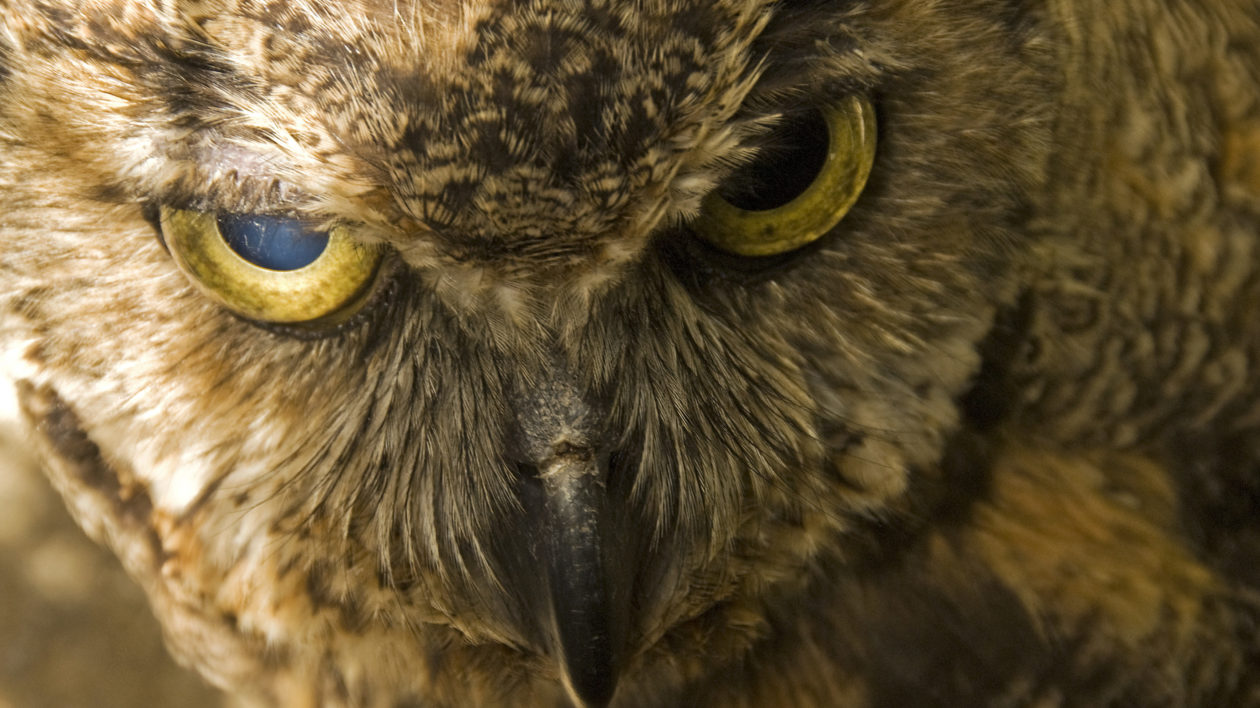
Into Owl Territory
The great horned owl, of course, is one of the most recognizable birds in the Americas, with its pointy feather tufts (the “horns”) and large fluffy appearance.
This is the prototypical “wise old owl,” and the owl of cartoons and children’s books.
It’s also incredibly adaptable, found from Canada to Patagonia, and most places in between. It is at home in desert and wetland, forest and prairie. And it also has no trouble thriving around people: you can find them in parks, farms, small woodlots, suburbs and cities.
Despite this, they’re not always easy to spot due to their nocturnal habits. But at this time of year, in the right location, a chorus of hoots provides the soundtrack to dawn and dusk.
That’s because, around October, male great horned owls begin setting up territories. Most great horned owls mate for life, but in the fall the pair begin a courtship display, loudly calling to each other.
The great horned owl’s hoot is pretty much unmistakable, although ornithology web sites often describe it in different ways. A common hooting pattern is a longer hoooooot, followed by two or three shorter hoots.
And these owls have a range of other vocalizations, too, some of which sound like barks or a screeching cat. (Cornell’s All About Birds site features some great audio of these different calls).
The owls continue setting up their territory this month, and begin setting up a nest.
They’ll use an abandoned nest previously used by a red-tailed hawk, squirrel or other critter. Come January, they’ll begin setting in the nest – far earlier than most other birds.
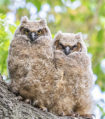
Why Do Owls Nest So Early?
Nesting early naturally entails some risk. Eggs must be kept warm and incubated, which can be a challenge when the temperature is in the single digits and snow is falling.
Female owls stay on the nest for prolonged periods (and when they leave to hunt, the male will take over).
If the eggs become too cold, they won’t hatch. This is why most birds wait until temperatures are warm and mild.
So: why nest early?
Owls are large birds. It takes them longer to grow and mature than, say, a songbird.
Young great horned owls must also master complex hunting maneuvers. They are equipped with superb senses – researchers have found that a great horned owl can hear a mouse rustling at 900 feet – but hunting still involves learning, trial and error.
Early hatching means they’re ready to practice their flying and hunting skills when the weather is mild and prey is abundant.
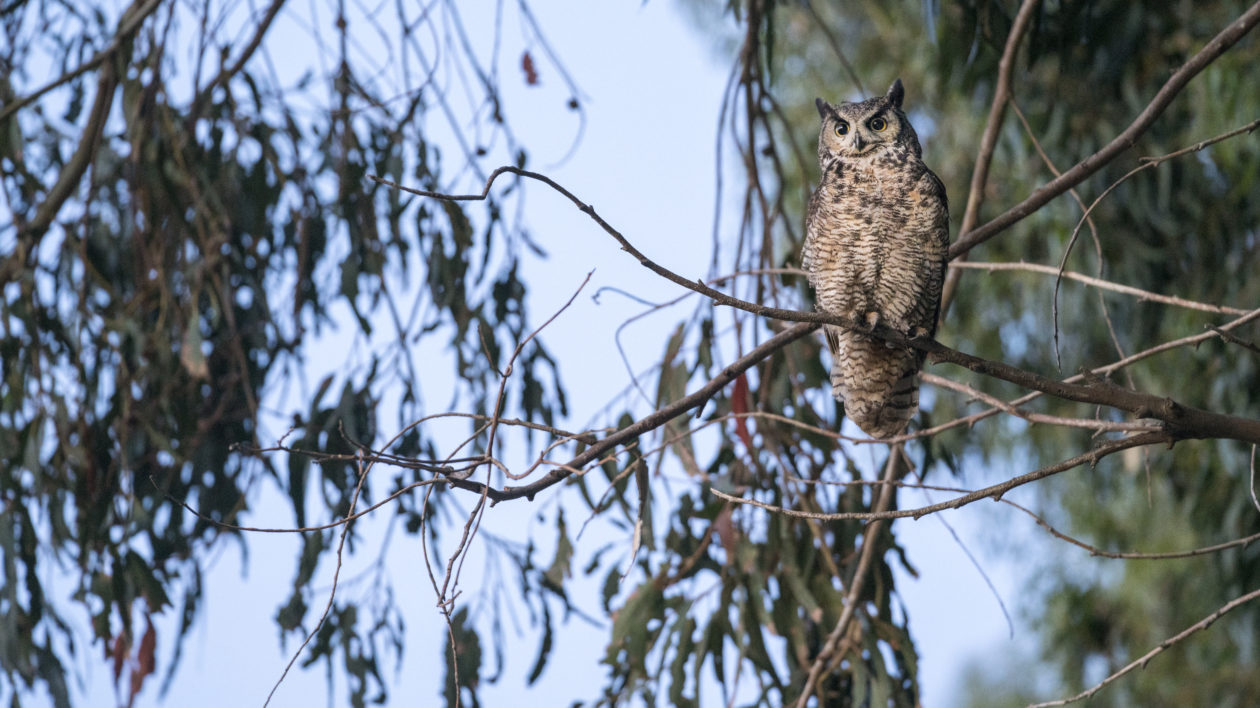
Enjoying the Owl Show
There’s likely a great horned owl territory near you. Now you just need to find it.
While owls can live in a variety of habitats, you won’t find them just anywhere. Focus on the edges. Owls prefer to have a good vantage point – a place where they can see out over the terrain.
Trees that overlook an open area are ideal. In particular, try to find a big-limbed tree that has shed its leaves (or a dead one). You can often find owls roosting there.
You can do a bit of scouting, too. Owls regurgitate the indigestible hair and bones of their prey: called owl pellets. You can often find a number of these pellets below preferred trees. (You can often reassemble the bones of mice by dissecting an owl pellet, another fun wintertime activity).
Of course, the easiest way to spot owls is not by looking, but listening. Those haunting hoots carry a long way. Sometimes you almost feel those hoots before you see them.
Once you hear the hooting, look carefully in likely trees, and you may be able to see the distinctive profile of the owl. Look through a binocular, and don’t be surprised if the owl is staring back at you.
It pays to quietly observe the owls for a while. I’ve been able to watch some interesting behavior, including owls mating.
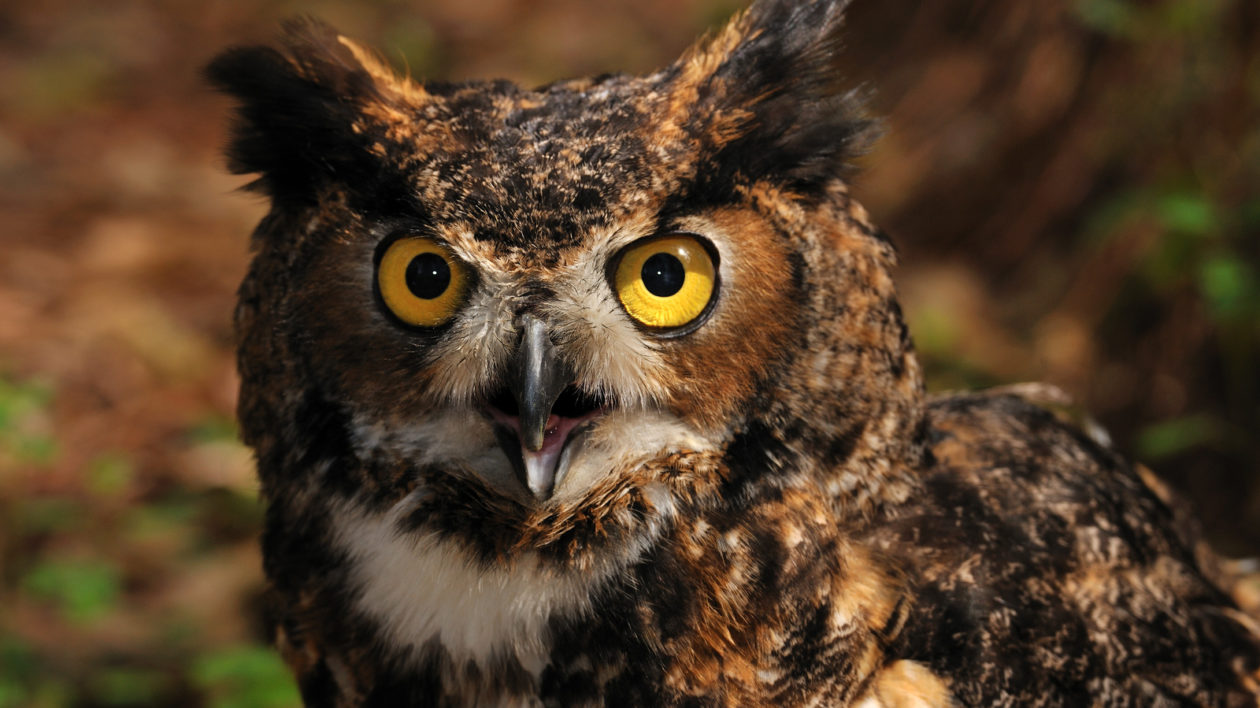
Photo © Mark Conlin, courtesy of Tallahassee Natural History Museum
My Owl Connection
Family lore holds that, long before I could utter words, I would lie in my crib and hoot like an owl. Perhaps my naturalist path was set, even then.
That story has been in my thoughts this year, as I prepare for the birth of my own son. The great horned owls, it seems, are everywhere. I see them perched on trees around our home and along the greenbelt jogging path; hear their calls in the canyons and river bottoms.
I’m always alert to the local wildlife, but this year, I can’t help but pay extra attention to all that owl activity.
I wake up in the middle of the night, thinking of my son and the world he’ll inhabit. And then, there it is: that deep hoot, hoot, hooting.
It seems to fill the room.
I snuggle under the covers and smile, filled with the hope that my son will find such comfort and joy in the wild things and their always-interesting ways.
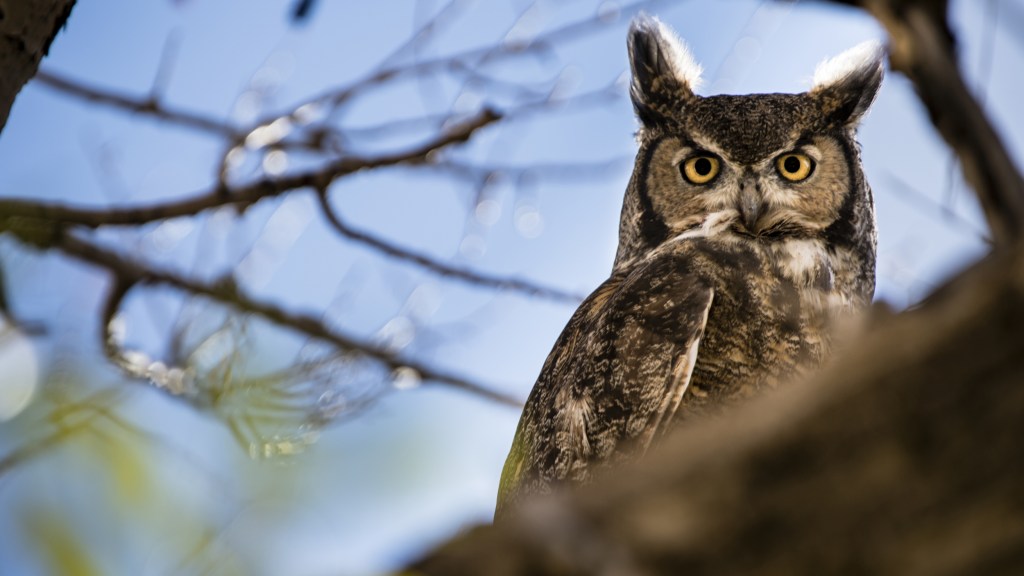



I woke up this morning to our hooting owl in the back yard. Then I started looking for material to read about owls and your article appeared to be the best. We live in the city, but have many trees. We have osage orange trees, a pecan tree, a silver maple and a very tall hackberry tree. We have owls in our yard on a regular basis, but I’ve never seen them. So, your article has inspired me to try a little harder to find a photograph them.
What a summer it’s been! An adult and 2 juveniles took up residence out my back door. I’ve had the joy of closely observing their behaviors on a daily basis…from watching them trying to keep their balance while the adult brings prey to the younger ones, constant screaming all night for food in early summer, some rather intimidating stares at me complete with bobbing, to the lessening screams in later summer as they learned to hunt for themselves. One thing that was so surreal was watching a feather drift down after one of them was grooming itself. Never have I seen anything in my life move so slowly through the air as though it were happening on a planet with minimal gravity. It was as though time stopped. A beautiful experience. Now at the end of Sept, I believe the youngsters have left the area, but listening to hooting that is beginning to interrupt the very quiet dark nights leaves me absorbing the distinctive sound of these magnificent creatures to the very basic core of my being, as though the universe is reminding me of the incredible experience it is to be alive and to humbly receive the tremendous gifts of nature and the wild, untamed beauty it offers from the tiny bunnies, to the gorgeous fox, the powerly large deer and many other species, to this overwhelmingly awesome predator, the Great Horned Owl.
Mr. Miller,
Your comments & interest in wildlife is extremely pleasing; wanting your son to enjoy the same sounds as the horned owl, wonderful. I’ve been listening to an owl for about 2 weeks now, wishing my grandsons were here to listen with me. He refers to our home place as “coming to the forest”, it’s just a country home in north Alabama. I wanted to be sure of which owl I was listening to and that’s when I came across your article that helped me confirm it’s certainly a horned owl! Thank you!
I have a longhorned owl nesting close to my bedroom window. It’s nest is large, and attracts the attention of black crows and other birds. It seems to communicate with me day and night. When it hoots, I mimic It’s hooting sound and our hooting back and forth can last for 30 minutes and longer at times. I have watched crows (10 or so at times) surround the nest in the mornings, and they bark at the owl as if to instigate a fight or to get the owl to leave the nest. I believe she’s protecting her eggs. She just ignores them. I have to make noises to get the crows to fly away. The owl seems to appreciate that! She is so beautiful and last year I video taped her a few times. She looks straight at me taping her. This is the 3rd year she’s comes and sits in one of the trees. But this time, she built her nest right outside of my window. I posted a video and a couple pictures of her. It was the first time I’ve ever seen an owl outside of in books and movies. My Grandchildren loves it. It was the first time thatany friends on Facebook had ever seen a live owl!